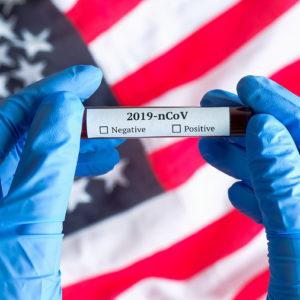Georgia Gov. Brian Kemp’s decision to loosen his coronavirus lockdown has unleashed a national debate over when it will be safe to reopen our economy.
Sorry, America — there is no “safe.”
The notion that there is a date in the near future when we’ll be as safe from COVID-19 as we were before it appeared is utterly unrealistic, whether your state reopens on Memorial Day, Labor Day or New Year’s Day.
That day won’t arrive until there’s an effective and widely available vaccine. And given how difficult it is to develop effective vaccines for coronaviruses, perhaps not even then.
Ask Dr. Anthony Fauci, director of the National Institute of Allergy and Infectious Diseases. “We will have coronavirus in the fall. I am convinced of that,” he said Wednesday.
Ask Dr. Tom Inglesby, director of the Center for Health Security at Johns Hopkins University, who said Sunday, “wherever we are in the epidemic, this virus is going to be with us until we have a vaccine.”
And ask the head of the CDC, Dr. Robert Redfield: “There’s a possibility that the assault of the virus on our nation next winter will actually be even more difficult than the one we just went through. [emphasis added] We’re going to have the flu epidemic and the coronavirus epidemic at the same time.”
It’s depressing to consider that — after all the economic damage we’ve inflicted on working families and small business owners — the result could be a worse winter in 2021 than the one we just suffered through. But it’s almost certainly true.
Yes, our extreme social distancing has “flattened the curve” and kept the number of hospitalizations manageable. But what we sometimes forget is that while the curve is flatter… it’s still the same length. The same number of COVID-19 victims, just over a longer period of time.
Which is why when former FDA chief Dr. Scott Gottlieb was asked about the right time to reopen the economy, he answered: “It’s going to take some time until we… get to the point where there’s a low-enough level of spread in the country that we could feel comfortable about opening up.”
Not “stop the virus” or “keep Americans safe.” Instead, the best we can do is “a low-enough level of spread.”
So, what “level” will America consider “low enough” to be willing to return to work? Or send their kids back to crowded schools?
The U.S. has recently been averaging around 1,500 COVID-19 deaths a day. Will 1,000 deaths a day be “low enough” for shoppers to go back to the mall? How about 100? Any number greater than zero?
This is the public policy challenge facing our political leaders, says Yuval Levin, a member of the George W. Bush administration who worked on pandemic preparation and other health issues.
“There’s a deeper problem for our democracy: There is no way forward that involves doing what people want to do,” Levin told Commentary magazine. “Polls show that people don’t want to go back, and I’m sure that’s true. But holding on like this is not sustainable.”
Levin is right about the polls. Eighty percent of Americans say they support strict shelter-in-place policies. But it’s up to leaders to look beyond that fear and prepare Americans for the future.
“What we should be demanding of our politicians now is not that they do what we want, but that they help us find a way to balance safety with the necessity of getting our economy moving, so we don’t have the worst economic disaster in our history,” Levin said. “That’s going to be hard. It’s going to involve doing things nobody wants to do,” Levin said.
Advocates of extending the lockdown well into the summer say they’re waiting for “testing, testing, testing and tracing, tracing, tracing,” as Speaker Nancy Pelosi put it. But testing and tracing aren’t treatment. They can help maintain Gottlieb’s “low-enough level” of infection, but they won’t keep any of those newly-infected patients out of the hospital. Or worse.
Yes, we’re hoping to have a treatment to rescue the very worst cases. And we pray for a vaccine that can do to COVID-19 what Jonas Salk did to polio.
But until then, every American will be living in a land with a new danger. Neighbors, co-workers, people they know will likely be hospitalized for months to come. Some will die.
We don’t want to live in a nation where simply showing up for work is an act of courage. But in COVID-19’s America, there is no “safe.”

